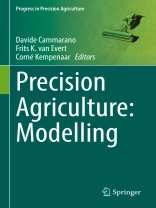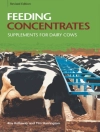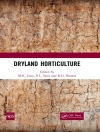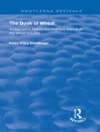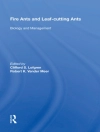This book describes how models are used to monitor crops and soils in precision agriculture, and how they are used to support farmers’ decisions. The introductory section starts with an overview of precision agriculture from the early days of yield monitoring in the 1980s to the present, with a focus on the role of models. The section continues with descriptions of the different kinds of models and the opportunities for their application in precision agriculture. The section concludes with a chapter on socio-economic drivers and obstacles to the adoption of precision agriculture technologies. The middle section of the book explores the state-of-the-art in modeling for precision agriculture. Individual chapters focus on the major processes in precision agriculture: water use, nitrogen and other amendments, as well as weeds, pests and diseases. The final section contains a series of short chapters that each describe a commercial, model-based service that is currently available to farmers. The book aims to provide useful information to graduate-level professionals that want to broaden their knowledge of precision agriculture; to scientists who want to learn about using academic knowledge in practical farming; and to farmers, farm consultants and extension workers who want to increase their understanding of the science behind some of the commercial software available to the farming community.
Spis treści
Chapter 1 Introduction.-
PART 1: MODELLING.- Chapter 2 Statistical Modelling.- Chapter 3 Geostatistics.- Chapter 4 Crop and Soil Modelling.- Chapter 5 Pest and Disease Modelling.- Chapter 6 Adoption of Model-Based Practices in Precision Agriculture.-
PART 2: ACADEMIC/STATE-OF-THE-ART.- Chapter 7 Water.- Chapter 8 Nitrogen.- Chapter 9 Pest Diseases.- Chapter 10 Data Assimilation/Fusion.-
PART 3: CASE STUDIES.- Chapter 11 Potato Company Mc Cain.-Chapter 12 Soil Essentials.- Chapter 13 Adapt-N.- Chapter 14 Granular.- Chapter 15 BASF /XARVIO.- Chapter 16 Watch It Grow Belgium.- Chapter 17 Akkerweb.- Chapter 18 Kubota.- Chapter 19 India TATA Consultancy.- Chapter 20 DACOM.-
PART 4: SUMMARY AND OUTLOOK.- Chapter 21 Summary.- Chapter 22 Outlook.
O autorze
Davide Cammarano is a Professor of Environmental Crop Science at Aarhus University, Denmark. His main aim is translating digital information into agronomic practices by maximizing the tradeoffs between economic and environmental impacts. One focus of his research is how to optimize the use of crop-soil-atmosphere models with observed data to support and improve the farmers’ decision-making. His other scientific interests are precision agriculture, crop modelling, agronomy, climate change, crop and soil sciences, remote sensing, and climate forecasts in agriculture.
Frits van Evert is a senior researcher in precision agriculture at Wageningen University & Research. His main research interest is increasing crop yield, crop quality, and the profitability of farming while reducing the use of inputs and the impact of agriculture on the environment. He believes this can be achieved by supporting farmers with information that is based on crop and soil models combined with observational data from satellites, drones, and sensors on the ground. Additional research interests include agricultural robotics, data management, and measuring the sustainability of agricultural systems.
Corné Kempenaar is senior researcher in precision agriculture at Wageningen University & Research, and associate professor Precision Agriculture at Aeres University of Applied Sciences . He has a background in crop protection and weed management science. He coordinates public–private research projects on precision agriculture applications, and is also involved with an adoption stimulation project for precision agriculture in The Netherlands. A general theme in his studies is the linking of data to decision support systems for the implementation and development of precision agriculture, with specialization in arable farming.
